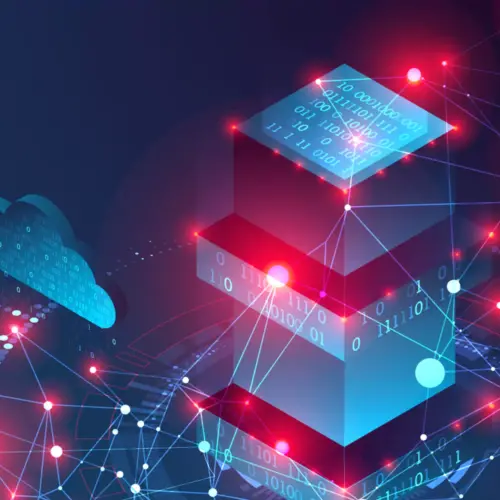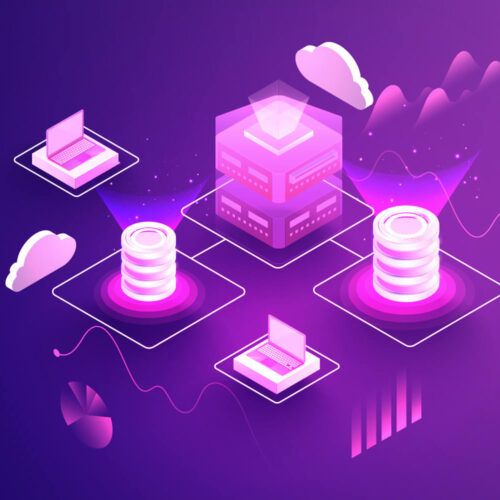It’s not every day you purchase configuration management database (CMDB) software. And if you haven’t purchased it in a while (or ever), you may not be aware of some common mistakes people make when doing so. It’s not the kind of purchase you want to get wrong because switching costs can be high. So, with that in mind, here are the seven mistakes you definitely want to avoid when purchasing CMDB software.
Mistake #1: Not understanding the cost of the software as your needs increase
Most companies never think about what happens when they get big. If you’re a growing company, the data center you have today won’t look anything like the data center you’ll have tomorrow. It will be bigger, with more hardware, more software and a larger CMDB.
Most CMDB software is licensed on a per-device basis. These may be broken out into pricing tiers in which you pay a flat rate for any number of devices in that tier. As you grow and add devices, you’ll climb up the tiers and pay a higher rate. It’s hard to know exactly what you’ll need in the future. Still, it would be nice to avoid price shocks as you grow.
Some CMDB software vendors use teaser rates to attract new customers. They understand that switching costs are high and locking customers in is the perfect opportunity to raise rates. Teaser rates can be enacted two ways. One way is to offer low per-device rates for the first year only, then raise the rates after that. The other way is to offer progressive pricing. Here, the per-device rate is very low for say the first 100 devices. But as you grow, so does the per-device rate. You can find yourself paying exponentially higher rates as the number of devices increases.
If you want to avoid making this mistake, insist on up-front price transparency for all quantities when purchasing CMDB software. Both now and in the future.
Mistake #2: Overlooking the inability to export your own data
Even though you want to avoid switching CMDB vendors, there may come a time when you want to or have to. And you’d sure like to avoid paying for the luxury to do so. Another way CMDB vendors attempt to lock you in is to charge you for the pleasure of leaving. How do they do that? By making you pay to export your own data.
Almost all CMDB software comes with the ability to export your data, when your license is active. But what happens after the license expires? With some CMDB software products, once the license expires, you lose the ability to export your data, or you can only export limited data in limited formats. You’ll have to renew the license even when you no longer want to use it just to retrieve your data.
If you want to avoid making this mistake, find a CMDB product that allows you to export your data in an easy-to-use format forever, for free. There’s no reason for you to have to renew an expensive software license just to retrieve your data. After all, it’s your data.
#3: Not understanding the true time and cost of implementation
When it comes to CMDB products, the cost of the software may not be the true cost of the software. Depending on which product you choose, it may require a professional services contract to install and configure the software. And unlike the software license, in which the precise cost is known up front, the cost of professional services can be a very large variable.
Why do professional services costs vary so much? Because implementation times vary so much. They can take from six months up to 18 months for some offerings while costing millions of dollars. The challenge is that there’s no way to know beforehand. Installers will promise short implementation times to secure the business. You’ll only discover the truth after you’re under contract.
If you want to avoid making this mistake, make sure you understand the true time and cost of implementation, which includes professional services. Or better yet, choose a CMDB solution that doesn’t require any professional services to install. One in which you can download the software directly from the web and be up and running in a couple of hours by doing it yourself.
Mistake #4: Purchasing CMDB software with limited discovery capability
When it comes to populating your CMDB, discovery is everything. First, you’ll want to auto-discover as many devices as possible, including physical, virtual, and cloud infrastructures. Surely you don’t want to have to populate your CMDB manually, especially if you have a lot of devices. But, not all auto-discovery solutions are created equal.
There are two fundamental approaches to auto-discovery: agent-based and agentless. Agent-based auto-discovery requires you to install a small piece of software (called an agent) on every device you want in your CMDB. That is so the device can report itself to the CMDB. Of course, if you knew every place to install the agent, you wouldn’t need auto-discovery. And besides, installing the agent is an inefficient and time-consuming endeavor.
A far more effective way to do auto-discovery today is using agentless auto-discovery. As the name implies, software is not required to be installed on each device. Just like search engines, agentless auto-discovery uses software to crawl your network and discover all of your network-enabled devices. The key benefits to agentless auto-discovery are that it’s very fast and requires no human intervention.
Not every one of your devices can be discovered using auto-discovery though. Devices which are not network-enabled cannot be found with auto-discovery, and yet you still want them in your CMDB. For these devices, you’ll want agent-based discovery.
To avoid this mistake, make sure all the things you want in your CMDB can be discovered by the software you choose. A comprehensive solution should come with agentless auto-discovery as well as agent-based discovery to support your unique situation.
#5: Not trying the software before you buy
It sure would be nice to know if the CMDB software you intend to buy does everything you need it to do. Unfortunately, because most implementations are so time-consuming and expensive, it usually isn’t practical to try it out before you buy it. And if you learn that it doesn’t do what you want after installation, it’s too late.
For an investment this important you really do need to find a way to try out the CMDB software before you buy it. And don’t just try it in a superficial way, like in an online demo offered by the vendor. You should really try it in your data center with your actual devices.
The solution here is to find a CMDB product that allows you to install it quickly into your data center and to evaluate it for free, for a period of time. Only then will you know if the solution works for your particular situation.
#6: Thinking you’re locked into your current solution
It may be that you want to upgrade your current CMDB software because your current one no longer suits your needs, but you fear the process of converting over from your current solution. You’ve already done discovery and you already have you database populated. You don’t want to lose it. You just want to effortlessly and securely transfer your data to a new CMDB, but you’re not sure what’s involved or if it’s even possible. You think you’re locked in.
There are CMDB software products out there that seamlessly integrate with other CMDB products and make transferring your data quick and safe. There are also CMDB vendors who will work with you to create custom integrations with your current product if needed.
If you think you’re locked in to your current CMDB software because upgrading is too difficult or dangerous, you’re not. You need to find a CMDB software vendors who offer integrations to other products, right out of the box, for little, or ideally – no additional charge.
#7: Penny wise, pound foolish
If you’re a small startup with limited funds, you may consider starting you’re CMDB journey with a free, open source CMDB product. But before you do you should know that just because something is free to download, doesn’t mean it’s really free. Just as the true cost of CMDB software includes the cost to install it, so too does open source software include the cost to manage it and to discover your devices.
What others have found with open source CMDB software is that the initial price—zero–looks great, until they realize there’s often no auto-discovery. They soon learn they need a full time employee to populate and manage the CMDB. A full time employee that almost always costs more that the CMDB software itself.
The mistake to avoid here is using open source software longer than you have to because you think it’s cheaper. In the long run, it’s not. When the time is right, it’s a mistake to not invest in CMDB software that does most of the work for you. Software that manages data throughout the life cycle of your devices, makes maintenance easy and offers the tools you need to view your data in an actionable way.
Conclusion
Purchasing CMDB software is not something anyone does very often, and ideally, most really will only do it once. It’s therefore easy (and common) to be unaware of the latest features and capabilities. While you’re researching the CMDB software market, keep these seven mistakes in mind so you can avoid them.
In summary, make sure you understand the true cost of the software over its entire life cycle. You’re not as locked in to your current solution as you think. Make sure you have access to your data after the license expires. And most important of all, try it before you buy it.





